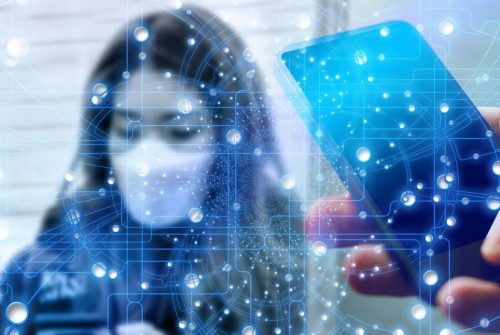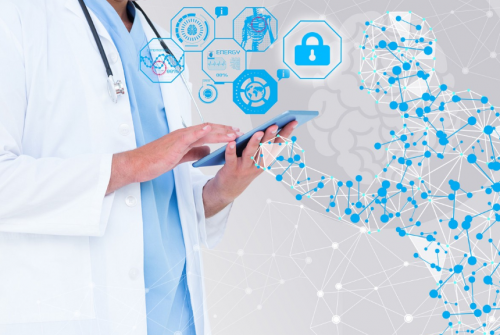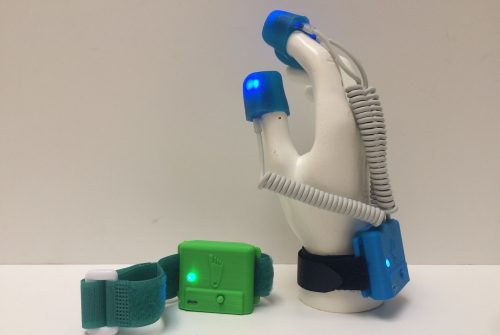Top 5 expected technology-based health innovations in 2020
24 March 2020 | Written by Adriano Fontanari
In the midst of this emergency, we write about something positive with the best tech innovations expected to change healthcare in 2020.

Medicine takes important steps towards a future dotted with innovations – from telemedicine to the use of machine learning and artificial intelligence – let’s discover together the 5 most important innovations that we could see in action already this year.
Telemedicine: a paradigm shift? We have heard about telemedicine for decades but its use has never taken off. The restrictive measures states are taking to contain Coronavirus require patients and doctors to rethink how I can talk. In this technology and in particular telemedicine (e.g. video consultation) represent a valid solution to connect with your doctor.
Could it be the beginning of a cultural change that will continue beyond this emergency? If on the one hand the human presence is fundamental in the doctor-patient relationship to build a relationship of trust, it is also true that this situation represents a unique opportunity to experiment with other modes of interaction on a large scale.
Conversational AI: chatbots get really smart. The pervasive use of the internet has also affected the health sector. A billion health-related searches are conducted on Google every day. It is clear that with 20 million health professionals in the world there is a gap that needs to be filled. Artificial intelligence is certainly a useful means of answering questions of a medical nature that people have every day.
It has been estimated that 300 questions/answers are sufficient to build a first dataset that answers, through a conversational interface, to most of the doubts that a person has on a specific topic.
Artificial intelligence allows not only to identify the most frequent ones but to predict in a clinical path what are the questions that the person will ask and therefore respond in advance to the needs of the user.
Specific dynamics of the doctor-patient relationship are also inserted in this context. In fact, there are questions (e.g. of a sexual nature) that the person is often uncomfortable asking the doctor or his acquaintances. The use of a chatbot to answer these questions would surely overcome the embarrassment barrier and lead to an increase in the health literacy of the population.
Voice assistants: the first touchpoint with the healthcare system. In the United States alone there are more than 110 million virtual assistants. The use of these devices is no longer limited to reproducing music playlists by the user. In fact, the adoption of virtual assistants in the field of health is increasing. Health systems are becoming aware of the potential that these assistants can have.
Implementations of health systems from different states that use technology are growing. They range from the possibility of booking a visit to the doctor, to reminders for taking medications, to analyzing the voice to detect an abnormal physical or emotional state, which can be indicative, for example, of a depressive state.
If, on the one hand, there are innumerable applications in healthcare, the theme of privacy and the management of the data collected represent the main topics of discussion in this context.
Artificial intelligence enters the lane. There are various potentials of artificial intelligence in supporting the doctor during the diagnostic process. From a more in-depth reading of the exams (e.g. magnetic resonance imaging) to the construction of multivariable risk models of pathologies (e.g. heart attack) that take into account data of different nature (clinical and social).
If the current epidemic could slow down the trial and adoption of these new technologies, it is expected that in the medium term the work of the clinician will be increasingly supported by the Clinical Decision Support System (CDSS), i.e. tools to support the diagnostic process. . In practice, these translate into the possibility of making better diagnoses in less time with a consequent overall reduction in costs for the healthcare system.
5G: the missing link for true digital transformation in healthcare. Wearable sensors, virtual and mixed reality, telemedicine are just examples of technologies that generate a lot of data whose transmission is often limited by the speed of the internet connection.
Currently, there are 34 countries where it is possible to access a 5G network and the number is expected to grow in 2020. However, a number of doubts remain, which could slow down the speed of adoption of 5G, such as the number of antennas required and the potential effects on the health they could cause.
5G is still a key technology to facilitate the adoption of devices connected to the internet and change the way the user interfaces with the health system. Think of devices for the management of chronic diseases (e.g. diabetes) that continuously transmit the patient’s parameters to the doctor and therefore allow preventive intervention if the clinician detects abnormal values.





